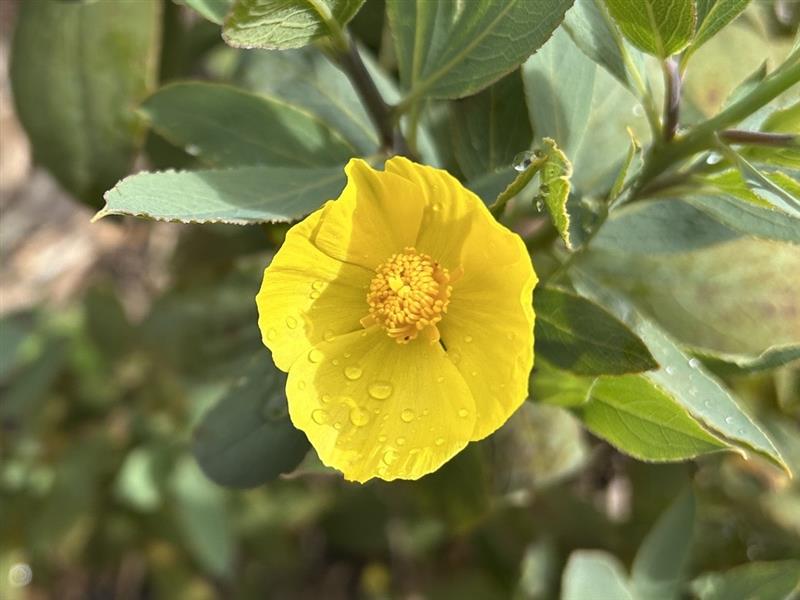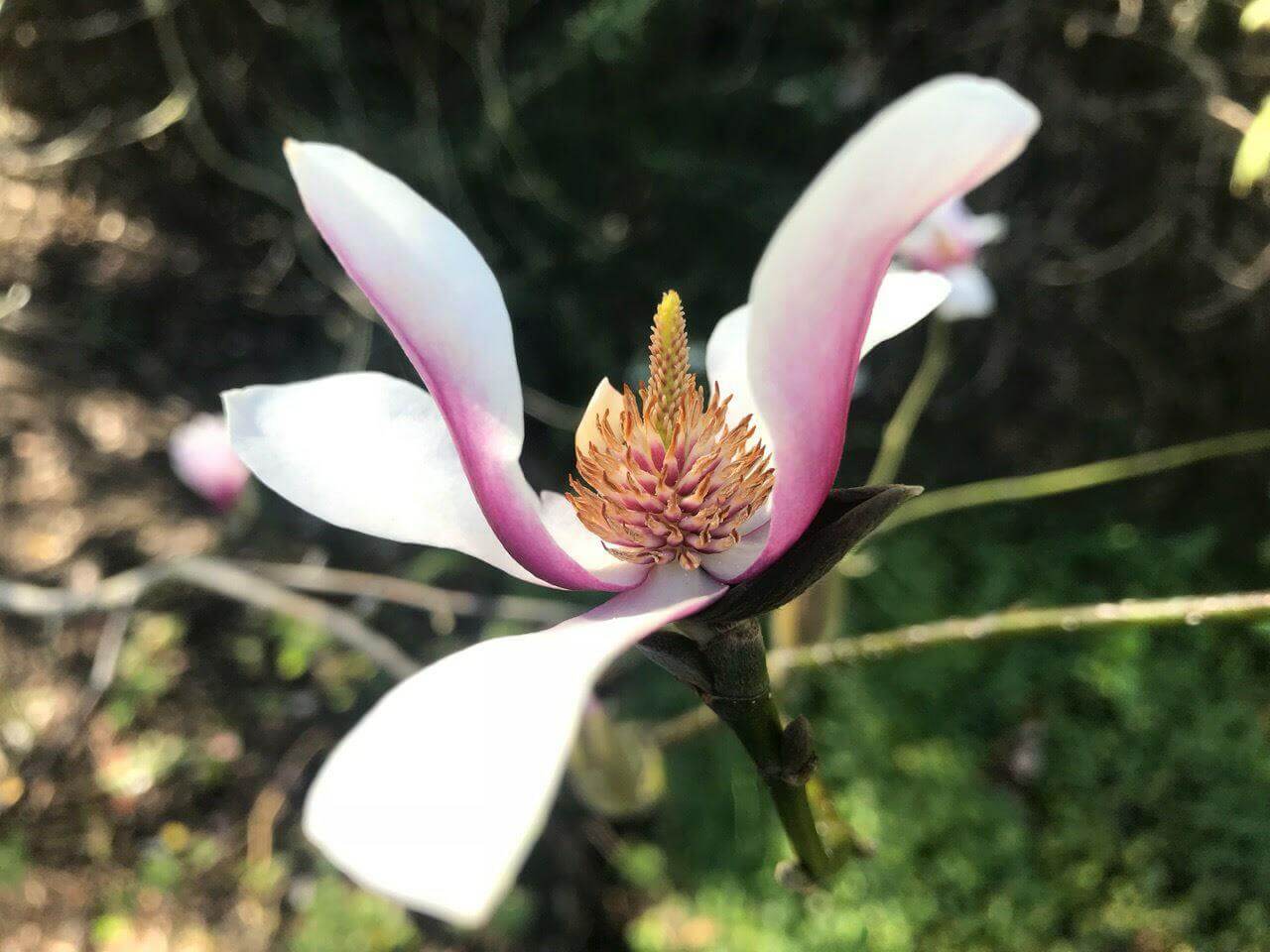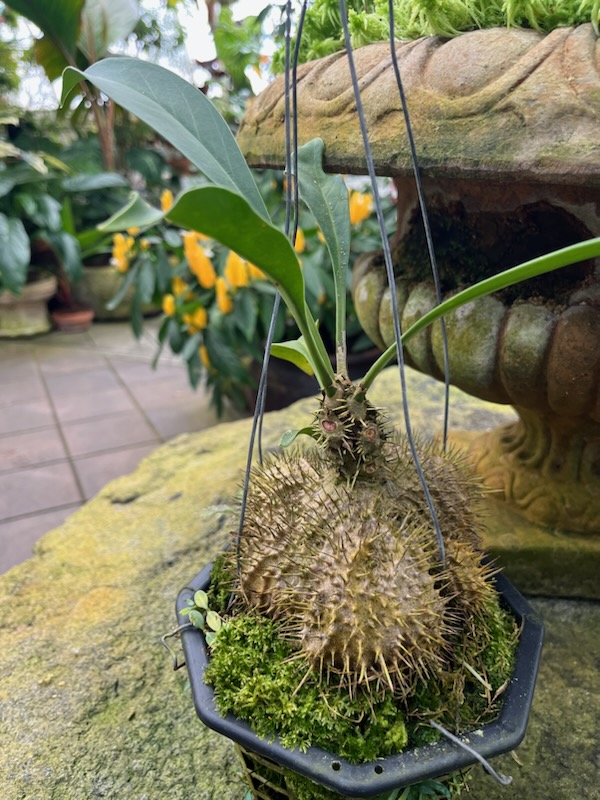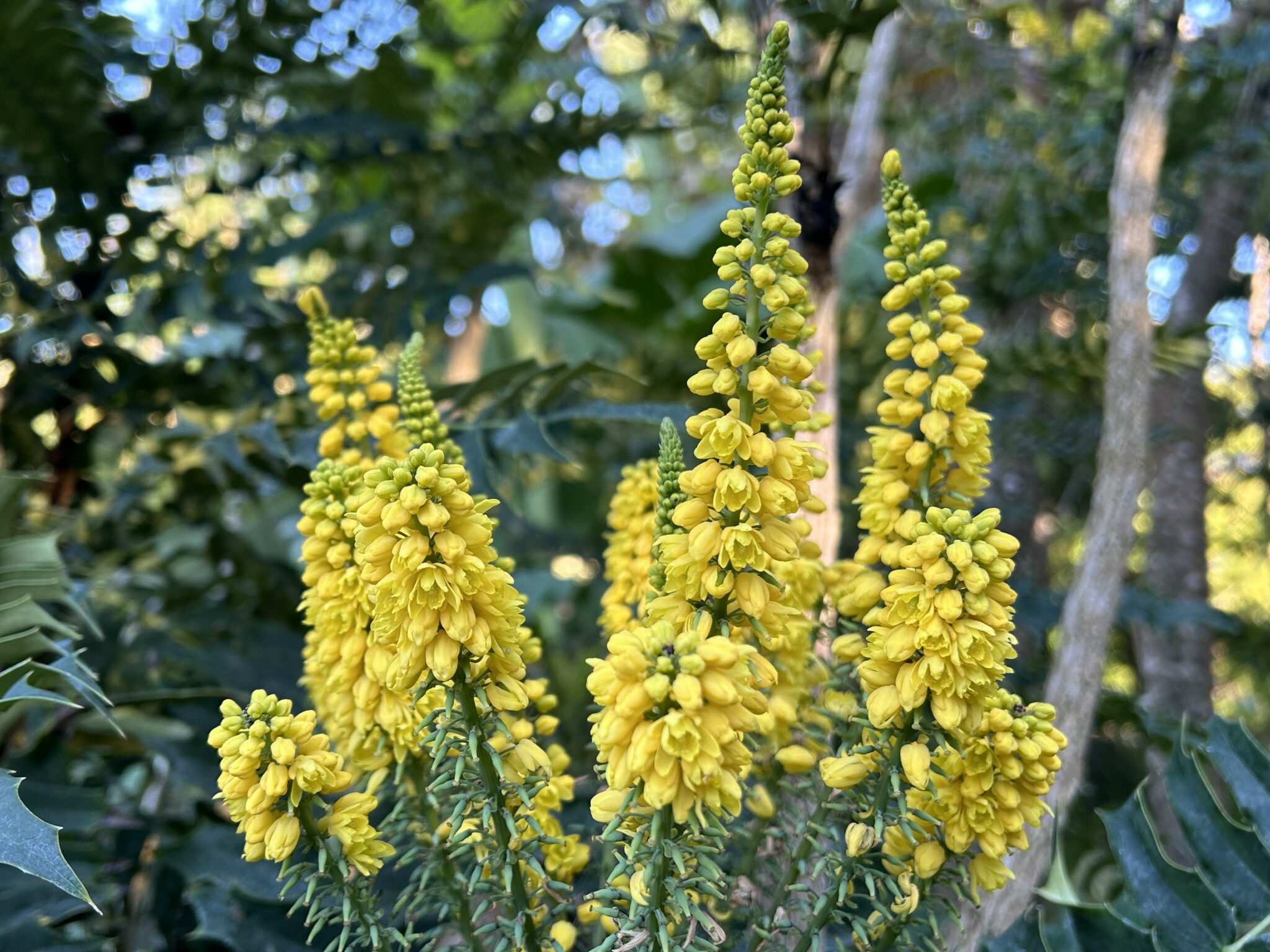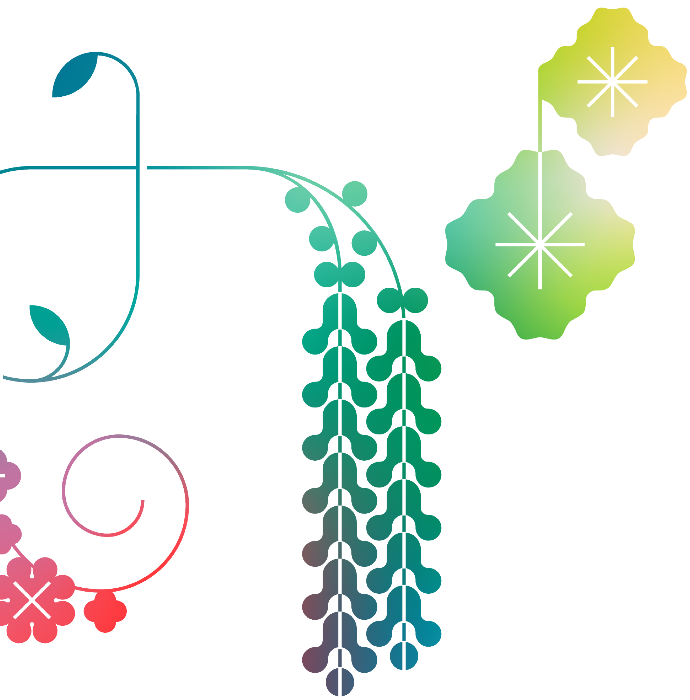
Curator’s Corner – Leucadendron laxum
Commonly known as the bredasdorp conebush and known for its distinctive yellowish color. Leucadendron laxum is an evergreen shrub with small, needle-like leaves, belonging to the Protea family.
Profile
Scientific name: Leucadendron laxum
Family: Proteaceae
Plant type: Evergreen shrub
Environment: Mediterranean, Shrubland
Bloom time: Spring
Uses: mostly used in flower arrangements and in decorative manner due to their colorful and exotic appearance.
Location: This unique plant can be found in San Francisco Botanical Garden, accession 2016-0051*A, located in South Africa, planting bed 43.
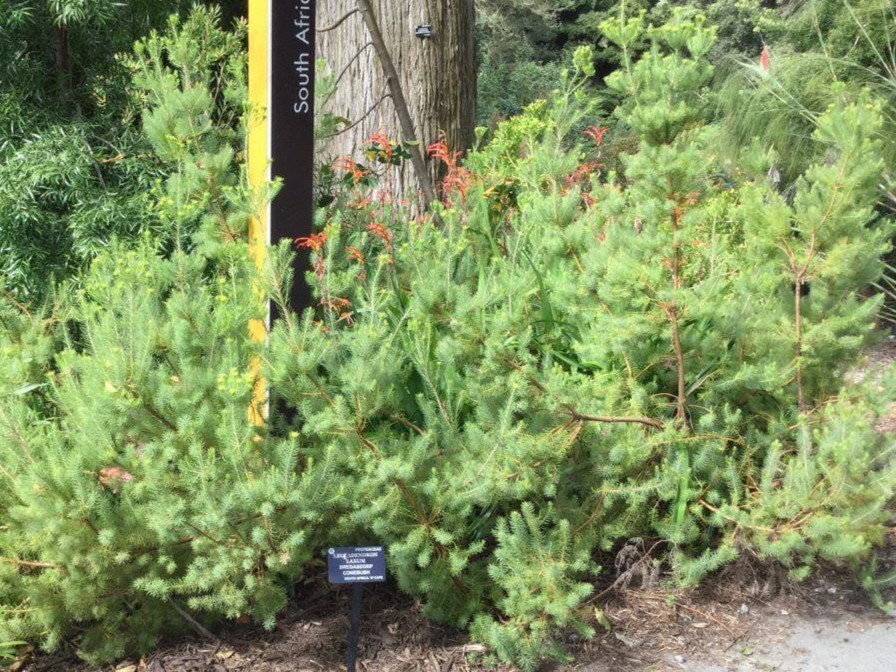
Thanks to its ornamental qualities, Leucadendron laxum has become popular in Christmas wreath-making and is also commonly a staple in American gardens and parks.
This species grows naturally in sand dunes and beach scrub on flat, damp ground at the bottom of valleys. These unique and colorful shrubs typically grow between 1.5 and 1.75 meters tall (approximately 4’9″ to 5’7″). They are dioecious, meaning male and female reproductive organs are found on separate plants. Both male and female plants produce small, bright yellow flowers. Leucadendron laxum occurs in dense stands near the southernmost point of the African continent, where the Atlantic and Indian Oceans meet. It has a very limited natural range, restricted to the Elim Flats, from Hermanus to Agulhas in the Western Cape Province of South Africa, where it is endemic. It blooms during spring, from September to early December.
The incredible diversity in the growth habits, flower forms, and colors of the protea family inspired the botanist Linnaeus to name the family after Proteus, the shape-shifting Greek god. The genus Leucadendron includes more than 93 species, subspecies, and varieties, all of which are woody shrubs. Leucadendron laxum belongs to the ancient plant family Proteaceae, which had split into two subfamilies, Proteoideae and Grevilleoideae, before the breakup of the continent Gondwanaland, around 140 million years ago. Thanks to its ornamental qualities, Leucadendron laxum has become popular in Christmas wreath-making and is also commonly a staple in American gardens and parks, including here in San Francisco as well.
Unfortunately, the species has lost half of its natural habitat and is currently classified as Endangered (EN) on the Red List of South African Plants. The primary cause of this decline is habitat loss due to drainage and farming.


Unfortunately, the species has lost half of its natural habitat and is currently classified as Endangered (EN) on the Red List of South African Plants. The primary cause of this decline is habitat loss due to drainage and farming. 53% of its habitat has been negatively impacted by agriculture, mainly due to the cultivation of cereal crops, vineyards, pasture, and the construction of dams for irrigation. As a result, remaining plants are now confined to field margins, along watercourses, and road verges. The decline continues due to human activities such as wild harvesting for the cut flower industry, as well as the spread of invasive alien plants like acacias.
Other ongoing threats include conversion to vineyards, alien plant invasion, eutrophication, frequent fires, overgrazing, and road verge clearing. Conservation efforts, including alien plant clearing by South Africa’s Working for Water program in the Nuwejaars River area around Elim, have helped restore parts of the plant’s habitat. However, continued management and clearing are essential to prevent reinvasion and support the species’ survival.
This plant can be identified with its distinctly rich yellow flowerheads in spring, followed by reddish cones on female plants in summer.
Written content by German Gonzalez, photos by Royal Jenkins.
